= Rebutia huarinensis Kníže
n.n. catalog name (Kníže in 2005 list KK1894)
Accepted Scientific Name: Rebutia steinmannii (Solms) Britton & Rose
Cactaceae (Britton & Rose) Britton & Rose

Mediolobivia huarinensis (Rebutia huarinensis) Photo by: Valentino Vallicelli
Origin and Habitat: Huari, Bolivia
Habitat: Rebutia huarinensisSN|22826]]SN|22826]] grows on high mountains at around 3200 metres above sea level.
Synonyms:
See all synonyms of Rebutia steinmannii
Description: Rebutia huarinensisSN|22826]]SN|22826]] is a small cactus, mostly offsetting
Stem: Tiny, depressed-spherical to oblong 2-3 cm wide, 1,5-2,5 cm tall (but usually more in cultivation)
Ribs: 10 to 12, low, often spiralled and tubercled.
Roots: Thick and long tap-root.
Spines: About 8 acicular, bristle-like pale whitish up to 4 mm long.
Areoles: Gold.
Flowers: From the side at the base of the plant, short, erect, funnel-shaped, in shades of red. Outer tepals oblong, apiculate; inner tepals rounded.
More...Subspecies, varieties, forms and cultivars of plants belonging to the Rebutia steinmannii group
 Rebutia christinae Rausch: has flowers in shades of intensive orange. Distribution: Tarija, Bolivia.
Rebutia christinae Rausch: has flowers in shades of intensive orange. Distribution: Tarija, Bolivia. Rebutia huarinensis Kníže: has funnel-shaped, carmine red flowers. Outer tepals oblong, apiculate; inner tepals rounded. Distribution: Huari, Bolivia.
Rebutia huarinensis Kníže: has funnel-shaped, carmine red flowers. Outer tepals oblong, apiculate; inner tepals rounded. Distribution: Huari, Bolivia. Rebutia poecilantha F.Ritter: has flowers up to 40 mm long and wide crimson to purple, edged orange red. Distribution: North of Camargo, Chuquisaca, Bolivia.
Rebutia poecilantha F.Ritter: has flowers up to 40 mm long and wide crimson to purple, edged orange red. Distribution: North of Camargo, Chuquisaca, Bolivia.- Rebutia steinmannii (Solms) Britton & Rose
 Rebutia steinmannii var. costata (Werderm.) Pilbeam: has 8 or 9 straight ribs (a low count for this species). Flowers orange-red, edged carmine. Distribution: Bolivia (La Paz, Potosi and Tarija) and Argentina (Jujuy).
Rebutia steinmannii var. costata (Werderm.) Pilbeam: has 8 or 9 straight ribs (a low count for this species). Flowers orange-red, edged carmine. Distribution: Bolivia (La Paz, Potosi and Tarija) and Argentina (Jujuy).
Bibliography: Major references and further lectures
1) Edward Anderson “The Cactus family” Timber Press, Incorporated, 2001
2) James Cullen, Sabina G. Knees, H. Suzanne Cubey "The European Garden Flora Flowering Plants: A Manual for the Identification of Plants Cultivated in Europe, Both Out-of-Doors and Under Glass" Cambridge University Press, 11/Aug/2011
3) David R Hunt; Nigel P Taylor; Graham Charles; International Cactaceae Systematics Group. "The New Cactus Lexicon" dh books, 2006
4) N. L. Britton, J. N. Rose “The Cactaceae. Descriptions and Illustrations of Plants of the Cactus Family.” Volume 4, The Carnegie Institution of Washington, Washington 1923, page. 41
5) Curt Backeberg “Die Cactaceae: Handbuch der Kakteenkunde” Gustav Fischer Verlag, Stuttgart New York 1982–1985
More...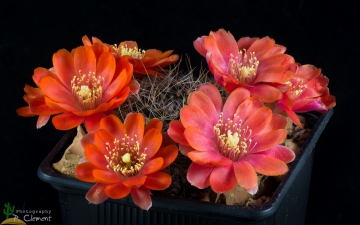 Rebutia huarinensis KK 1922 (Collector Karel Kníže) Huari, Bolivia, 3200m. (Rebutia huarinensis) Photo by: Peiffer Clement
Rebutia huarinensis KK 1922 (Collector Karel Kníže) Huari, Bolivia, 3200m. (Rebutia huarinensis) Photo by: Peiffer Clement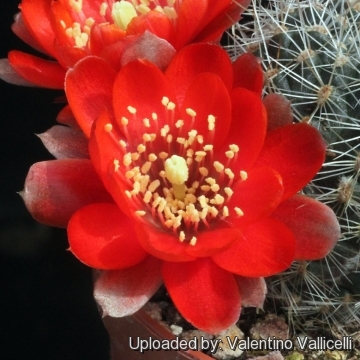 Mediolobivia huarinensis (Rebutia huarinensis) Photo by: Valentino Vallicelli
Mediolobivia huarinensis (Rebutia huarinensis) Photo by: Valentino Vallicelli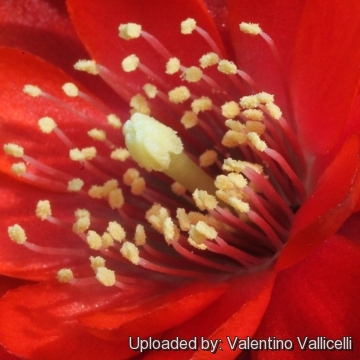 Mediolobivia huarinensis (Rebutia huarinensis) Photo by: Valentino Vallicelli
Mediolobivia huarinensis (Rebutia huarinensis) Photo by: Valentino Vallicelli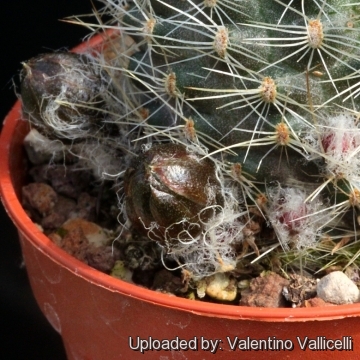 Mediolobivia huarinensis (Rebutia huarinensis) Photo by: Valentino Vallicelli
Mediolobivia huarinensis (Rebutia huarinensis) Photo by: Valentino Vallicelli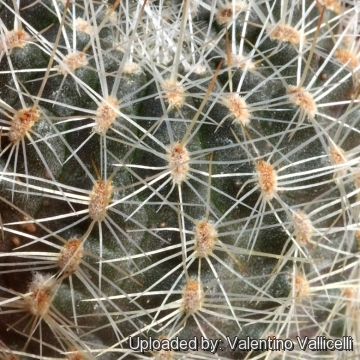 Mediolobivia huarinensis (Rebutia huarinensis) Photo by: Valentino Vallicelli
Mediolobivia huarinensis (Rebutia huarinensis) Photo by: Valentino Vallicelli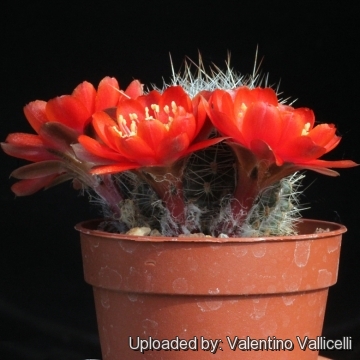 Mediolobivia huarinensis (Rebutia huarinensis) Photo by: Valentino Vallicelli
Mediolobivia huarinensis (Rebutia huarinensis) Photo by: Valentino VallicelliCultivation and Propagation: Full sun to light shade, Water regularly in summer but do not overwater (the root system is rot prone) Keep dry in winter Hardy to -4°C.
It is better that they are repotted regularly. Repotting will increase the number and size of stems and will increase the number of flowers produced. Repot yearly until reaching about 100mm in size, then every two or three years will suffice. Repotting is best done at the end of winter but can be done at other times. Do not water for a couple of weeks after repotting to reduce risk of root rot via broken roots.
Propagation: Offsets, seeds
















